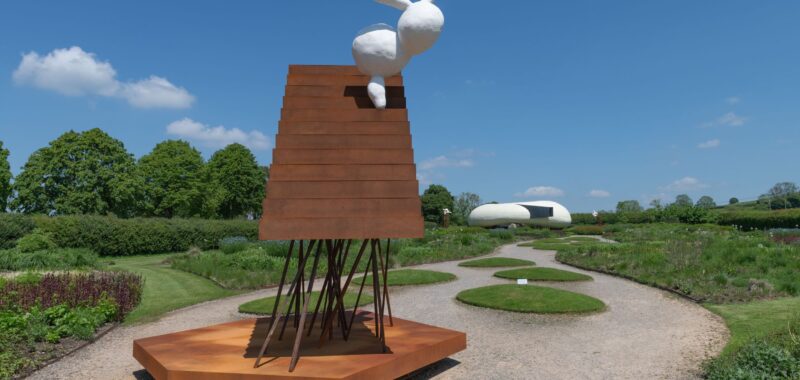SOMERSET, UK — Was it a profound spirit of irreverence that caused the sculptor Phyllida Barlow to destroy at least as much art as she made? She certainly had no sympathy for the idea — or perhaps the misplaced ideal — of the perfectly crafted sculptural object, made of smoothly turned wood or bronze. Her work was always created from the sort of heaped up, higgledy-piggledy stuff you would find in a dumpster: for example, odd offcuts of this, that, and the other. She was always keen on repurposing, taking something apart in order to create something new, which would likely become provisional, too, in the fullness of time. Was this something to do with her father, who would drive her around the East End of London when she was a child and show her the scale of destruction that war inevitably brings about? Her work evokes things retrieved, as if by some miracle, from the remnants of blasted objects.
International recognition came late to her. She was 65 years old when she had her first exhibition at Hauser & Wirth in Somerset, and it is here, less than 10 years later, that we can enjoy what we should consider her first relatively comprehensive retrospective, Unscripted, encompassing work of the past 60 years. Although she had thoughts about this show, she did not live long enough to see it realized; she died in 2023. In the first gallery are sinews of her earliest works, dating from the 1960s, when she was eagerly learning from the examples of others. Duchamp and the readymade (in Phyllida’s case, the readymade is a television), Alighiero Boetti and Arte Povera, Eva Hesse (represented by a colorful entanglement of tubing).

The second gallery ratchets up the drama, as it introduces some of her favorite presentational tricks: blocked entrances, sculpture as a massive intrusion whose presence you must negotiate your way through at your peril. Some of these works are huge, and look alarmingly precarious. How should sculpture occupy a space? What are its rights and its challenges? When asked about this yearning to make big things, she would tend to reply, “Nothing is ever as big as nature.”
Rough-formed boulders hang suspended in the air in Barlow’s sculptures (in fact, they are made of the lightest of materials, such as polystyrene); wedgy, dagger like-shapes push out from a horizontal panel on the wall. A sequence of giant gray arches, flecked with color, crowd together, one behind another. Many pieces in this exhibition had been shown previously; Frances Morris, curator of this show and former director of Tate Modern, makes it clear that this presentation in Somerset is in part an attempt to grapple with the challenges of dealing with Phyllida’s legacy — how to think through, with tact, sympathy and understanding, the immense body of work. It will be a long time in the unfurling.




Phyllida Barlow: Unscripted continues at Hauser & Wirth Somerset (Durslade Farm, Dropping Lane, Bruton, Somerset, England) through January 5, 2025. The exhibition was curated by Frances Morris.

